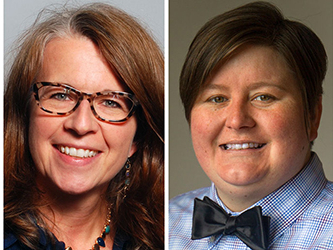We are excited to begin what we hope is a short tenure as Interim Co-Directors of the National Survey of Student Engagement (NSSE)! While “interim” certainly conveys our provisional status, we are very much envisioning some important changes to aspects of NSSE and are looking forward to being the bridge to NSSE’s next full-time Director. We will do everything we can to sustain the project, enhance our work, and ensure NSSE is well-positioned to attract new leadership.
Toward this end, we’re pleased to introduce this third installment of NSSE’s Annual Results, Engagement Insights: Survey Findings on the Quality of Undergraduate Education which focuses on the critically important topic of equity in assessment. To be sure, it is our core goal to enhance attention to equity in NSSE survey design, administration, analysis, reporting and research.


